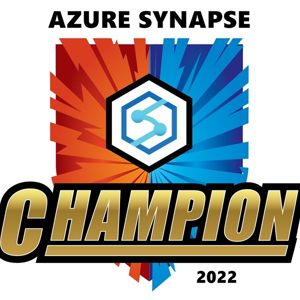@DataCoder
Thank you for the question and using Microsoft Q&A platform.
Both Azure Synapse Analytics and Microsoft Fabric have their strengths when it comes to implementing the Medallion architecture for a data lakehouse setup. Here’s a comparison to help you decide which platform might be better suited for your needs:
Azure Synapse Analytics
- Performance and Scalability:
- High Performance: Azure Synapse is designed for high-performance analytics and can handle large datasets efficiently.
- Scalability: It offers scalable compute and storage resources, making it suitable for large-scale data processing and analytics.
- Ease of Use:
- Integrated Environment: Synapse provides an integrated environment for data integration, big data, and data warehousing.
- SQL and Spark: It supports both SQL and Apache Spark, allowing flexibility in data processing.
- Integration with Other Services:
- Azure Ecosystem: Seamlessly integrates with other Azure services like Azure Data Lake Storage, Azure Machine Learning, and Power BI.
- Cost-Efficiency:
- Pay-As-You-Go: Offers a pay-as-you-go pricing model, which can be cost-effective depending on your usage patterns.
- Specific Features:
- Dedicated SQL Pool: Provides a dedicated SQL pool for high-performance data warehousing.
- Serverless SQL Pool: Allows querying data in the data lake without provisioning resources.
Microsoft Fabric
- Performance and Scalability:
- Unified Analytics: Fabric is designed for unified analytics, integrating data engineering, data science, and business intelligence.
- Scalability: It leverages Microsoft OneLake, which is designed to handle large volumes of data efficiently.
- Ease of Use:
- SaaS Model: Fabric is a SaaS offering, which simplifies management and reduces the need for infrastructure provisioning.
- User-Friendly: Provides a user-friendly interface and integrates well with Microsoft 365 applications.
- Integration with Other Services:
- Microsoft Ecosystem: Integrates seamlessly with Microsoft 365, Power BI, and other Microsoft services.
- OneLake: Uses OneLake as a unified data lake, reducing data silos and management effort.
- Cost-Efficiency:
- Simplified Pricing: Fabric’s pricing model is designed to be straightforward, potentially reducing costs associated with infrastructure management.
- Specific Features:
- Delta Lake Format: Uses Delta Lake format for data storage, which supports ACID transactions and improves data reliability.
- No Need for Spark Pools: Unlike Synapse, Fabric does not require you to create and manage Apache Spark pools.
Key Differences
- Data Storage: Azure Synapse uses dedicated SQL pools and serverless SQL pools, while Microsoft Fabric uses Delta Lake format within OneLake.
- Management: Fabric’s SaaS model simplifies management compared to Synapse’s more traditional infrastructure.
- Integration Focus: Synapse is deeply integrated with the Azure ecosystem, whereas Fabric is more aligned with the broader Microsoft ecosystem, including Microsoft 365.
If your primary focus is on handling large datasets with complex data processing needs and you prefer a more traditional infrastructure setup, Azure Synapse Analytics might be the better choice. On the other hand, if you are looking for a unified analytics platform with simplified management and strong integration with Microsoft 365, Microsoft Fabric could be more suitable.
For more information, please refer to these links:
https://3cloudsolutions.com/resources/microsoft-fabric-vs-azure-synapse-a-comprehensive-comparison/
https://atlan.com/microsoft-fabric-vs-azure-synapse/
https://video2.skills-academy.com/en-us/fabric/onelake/onelake-medallion-lakehouse-architecture
https://video2.skills-academy.com/en-us/azure/databricks/lakehouse/medallion
https://intellifysolutions.com/blog/azure-synapse-analytics-vs-microsoft-fabric/
Hope this helps. Do let us know if you have any further queries.
If this answers your query, do click Accept Answer and Yes for was this answer helpful. And, if you have any further query do let us know.
